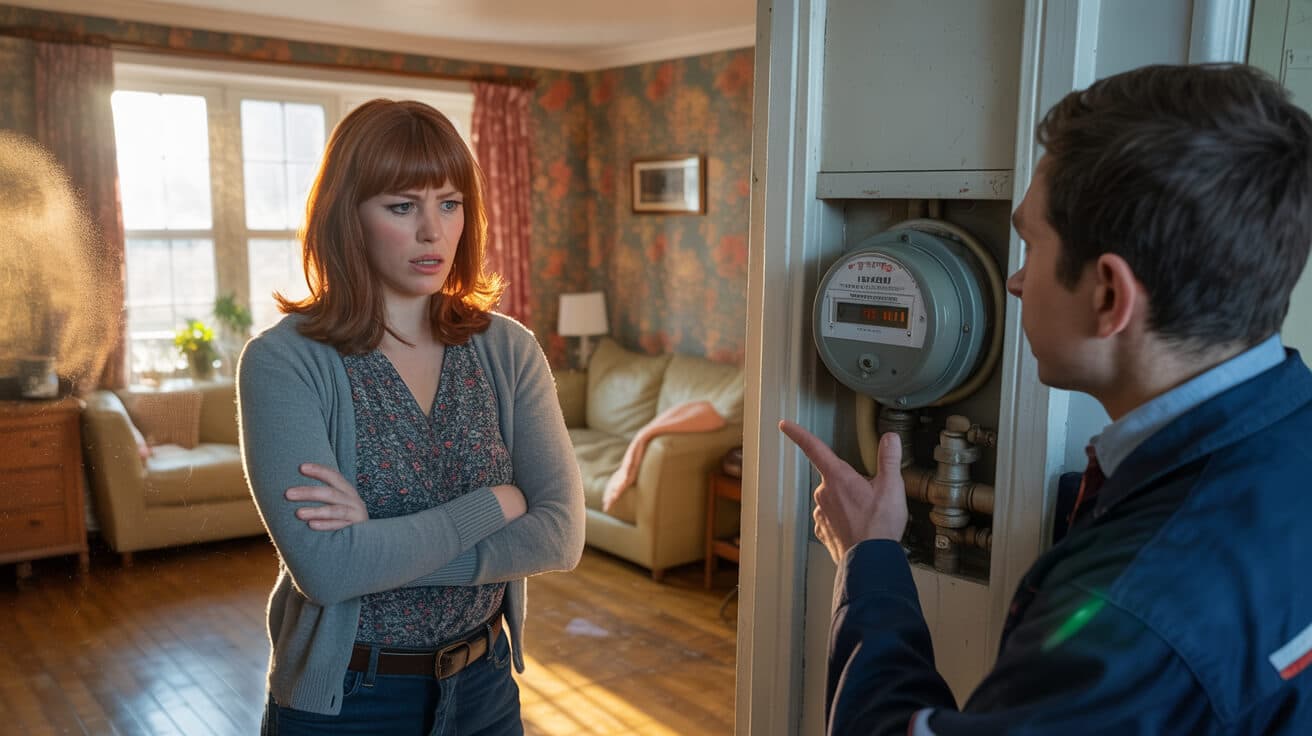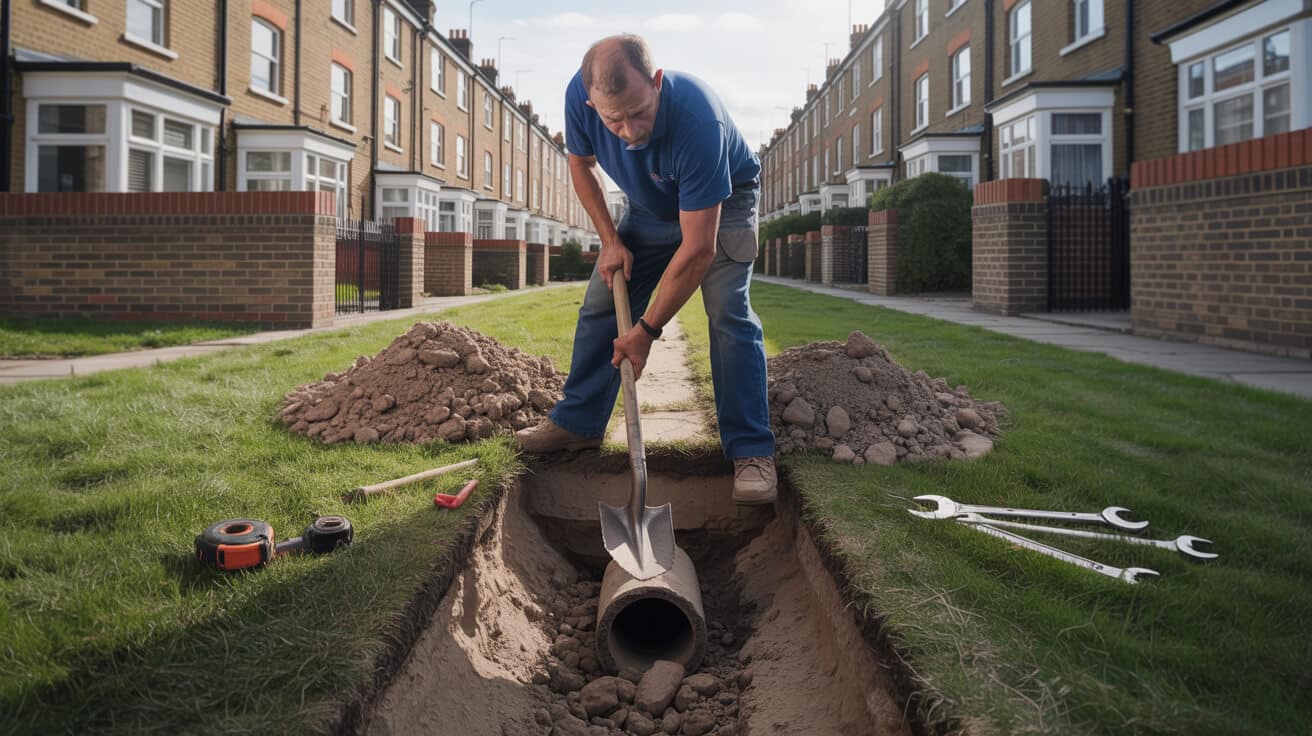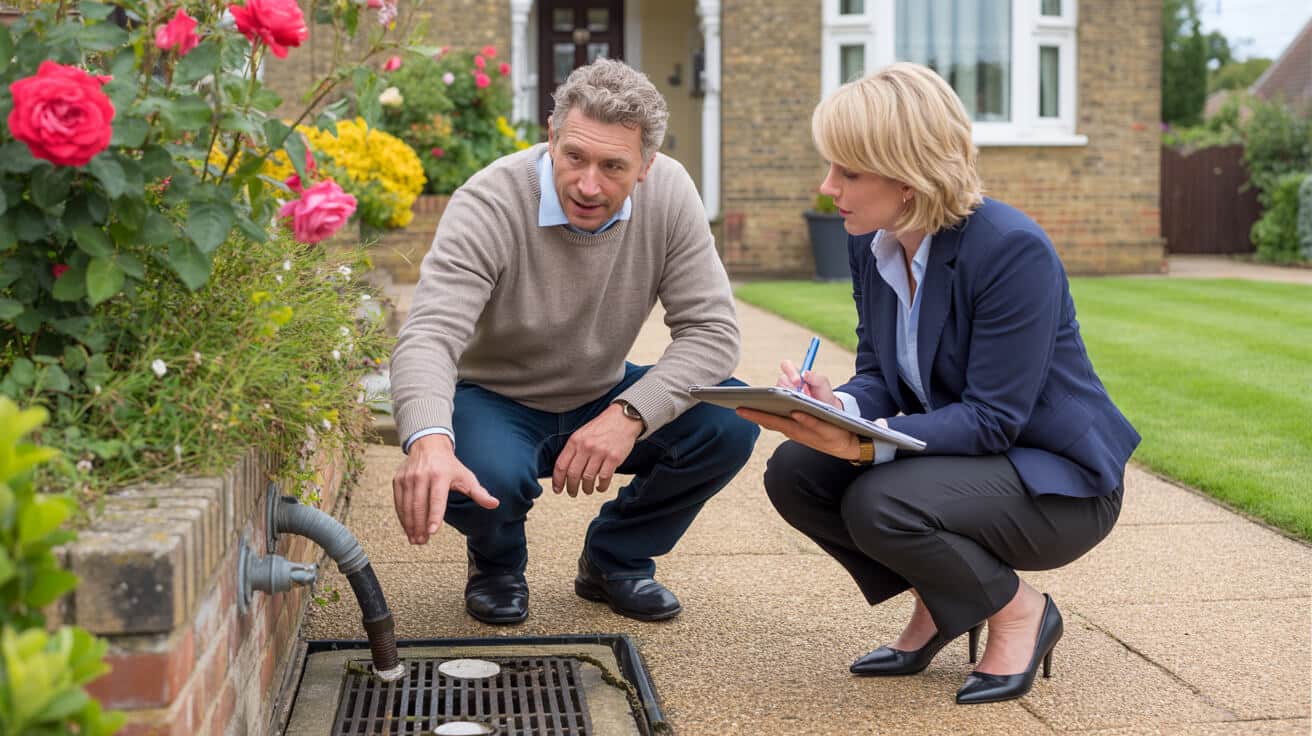 Victorian Bathroom Renovation Plumbing Challenges & Solutions
Victorian Bathroom Renovation Plumbing Challenges & Solutions
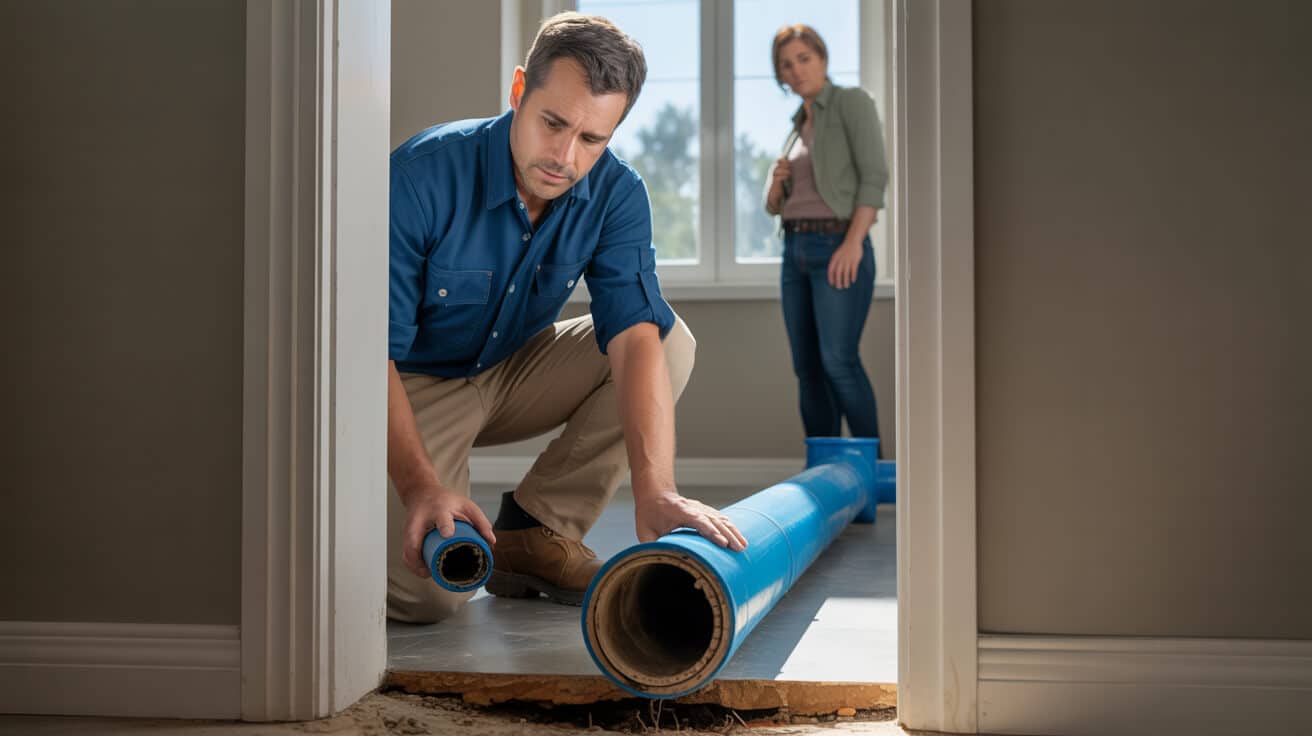
What Makes Renovating a Victorian Bathroom So Demanding for Today’s Owners and Agents?
A Victorian bathroom is architectural theatre—ornate taps, clawfoot tubs, high-level cisterns, all set in a 19th-century backdrop—but beneath every period tile is a hidden web of pipework and regulatory risk. The moment you open up, you’re not simply updating a bathroom; you’re decoding over a century of patched repairs, undocumented add-ons, and shifting plumbing standards designed for another era entirely. This is especially acute around Brighton, Hove, or London, where desirable period homes often hide plumbing time-bombs just beyond the scope of surface surveys.
Every closed panel is a gamble—what’s working today might fail under tomorrow’s rules.
Most modern fit-outs can be planned with a clear schedule and fixed scope. With Victorian bathrooms, the only certainty is uncertainty. You have a system built when lead pipes were standard, drain routes rarely mapped, and water pressure, insulation, and safety were loose concepts at best. Even when the water runs clear and fixtures look timeless, insurance, mortgage, and local council inspectors want proof that everything hidden meets 2024 codes—not just what’s above the floorboards.
Without a method that balances authentic restoration with up-to-date compliance, your project can slip from charming to catastrophic. Plumbers 4U moves beyond aesthetics—delivering robust, regulation-guaranteed work that keeps every stakeholder safe, documented, and confident from first survey to sign-off.
What Makes Victorian Bathrooms Unique in Plumbing Risk?
- Aged Infrastructure: Pipes, joints, and wastes span lead, galvanised steel, copper, clay, and early plastics—sometimes all in one circuit.
- Layered Modifications: Decades of repairs, bodged add-ons, and DIY fixes can turn a simple isolation into a day’s detective work.
- Code Blind-spots: Missing isolation valves, unsafe backflow, unvented soil pipes, and insulation gaps that would flunk a modern inspection.
Failing to meet these head-on is the biggest threat to schedule, cost, and long-term property value.
What Plumbing Hazards Do Most Victorian Bathroom Renovation Projects Reveal?
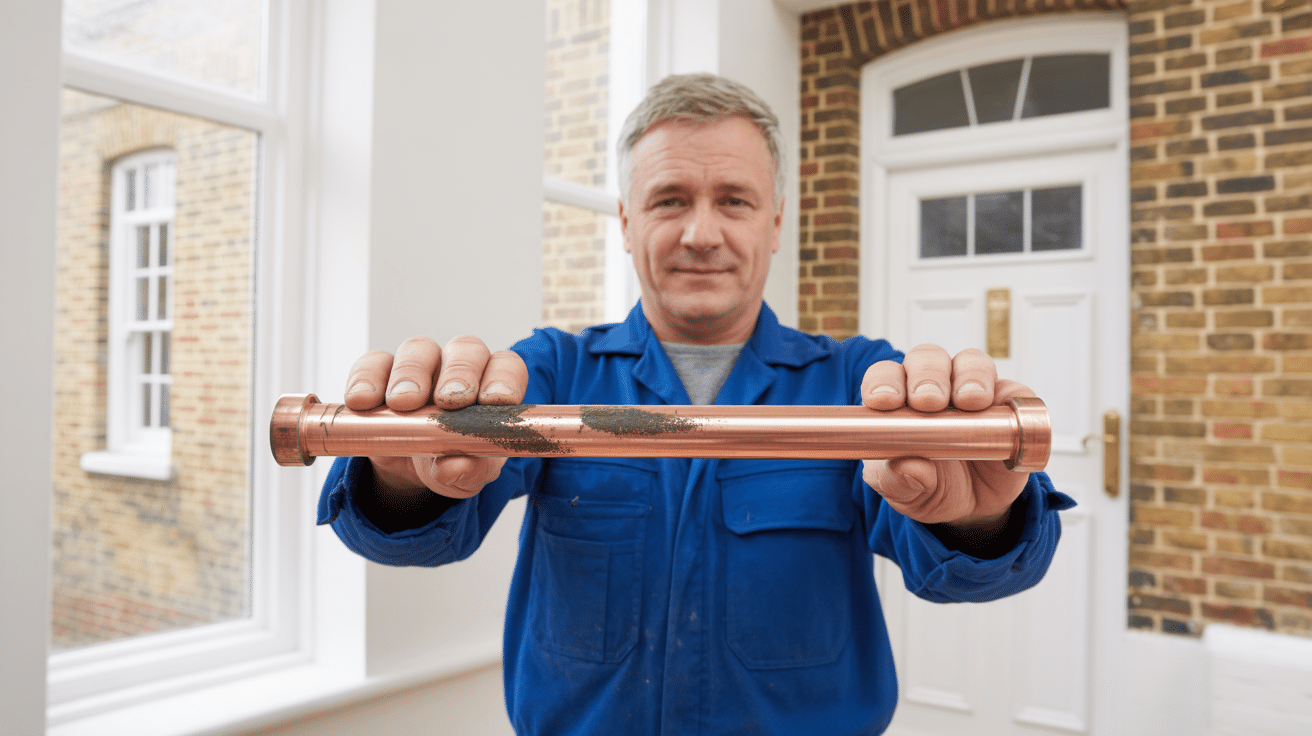
It’s not the period detailing that derails your timeline—it’s the legacy plumbing quietly lurking out of sight. These risks aren’t just technical; they directly impact cost, safety, legal standing, and the resale value of your asset.
Lead, Steel, and Accidental Patchwork
- Lead Warnings: Even a short lead section, from main to tap, invalidates water safety, insurance, and often mortgage terms in the UK *(emergencyplumb.co.uk)*. Surveyors and buyers increasingly ask for proof of total removal and documented replacement.
- Steel and Soldered Joints: Mid-century steel and early copper often corrode or leak. Ordinary swaps to modern pipe won’t solve this if patch joins or compression fittings are left anywhere in the system—especially under higher pressure from new unvented cylinders.
Drains, Asbestos, and Forgotten Insulation
- Clay Drain Failures: Old clay waste runs are magnets for root ingress, cracking, and severe blockages. Because these pipes are buried, issues often only surface after a new floor or luxury finish is installed—making a strong case for pre-works CCTV.
- Asbestos and Hazardous Wraps: Any insulation found wrapped around pipes or tanks pre-dating 1985 may contain asbestos—not only halting your project but requiring professional remediation. Ignoring this threat is illegal and endangers both health and finances.
- Condensation and Mould: Substandard old lagging creates condensation in voids, fuelling mould or rot that ruins fresh decor and fixtures.
Unqualified Repairs and Missing Protection
- Hidden Joints: DIY or historical repairs buried in boxing often fail when exposed to modern system pressure. Compression fittings not designed for legacy pipe can spring leaks without warning.
- Backflow, Lack of Isolation: Victorian set-ups often lack proper backflow prevention or fixture isolation—both now mandatory for UK properties.
A pretty tap is worthless if a hidden joint fails and soaks £5,000 worth of tiling.
A quick visual once-over is never enough—professional, full-exposure surveys and phased upgrades are the only route to real protection.
How Do Modern Material Upgrades Transform a Victorian Bathroom’s Safety and Compliance?
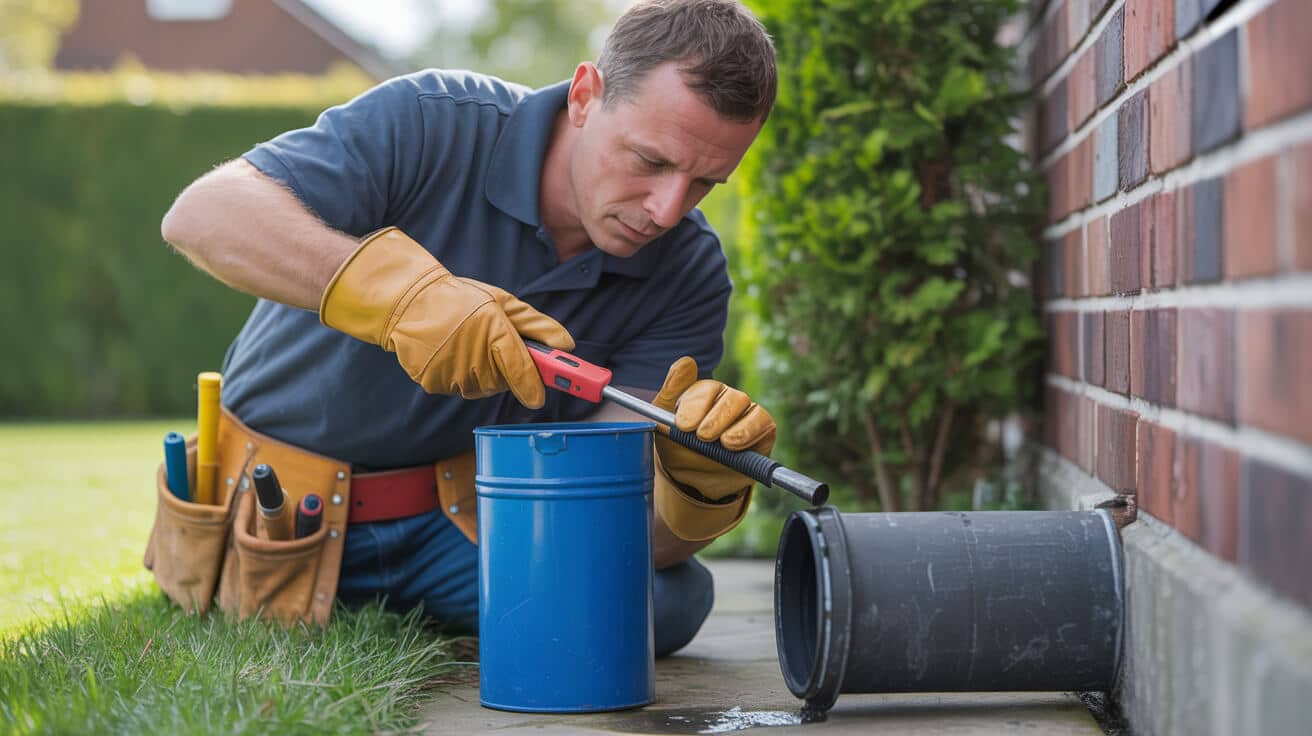
Bringing a period suite up to standard is so much more than swapping out dated taps. It demands an end-to-end upgrade of the system’s very skeleton—every pipe, fitting, and joint validated for function, safety, and documentation.
Lead and Steel: Out, Fully
- No Grandfathering: The law’s clear—*any* remaining lead or steel makes your supply non-compliant. WRAS and environmental regs demand total removal, not just end-point “bypass” fixes *(waterregsuk.co.uk)*.
- Modern Benefits: Switching to press-fit copper or PEX means not just better water quality, but enhanced pressure, lower leak risk, and less limescale.
Renewing Drains and Waste
- Clay Is Not Forever: Even “functioning” clay pipes can be breached by roots or displaced due to ground shifts. Replacing with PVC or lined alternatives cuts surprises for decades—especially after a camera survey and mapping.
Insulation and Asbestos Safety
- Test Before Touch: Any suspect lagging or tank jackets demand asbestos checks. Skipping this jeopardises health and can halt your entire build pending hazardous materials clearance.
- Current Specs: Part L and WRAS require modern insulation—protecting both pipes and your heating bill from thermal losses or bursts.
WRAS-Approved Fittings—Everywhere
- No “Almost” Fixes: Every tap, valve, and visible (and buried) fitting must hold WRAS certification. This matters not just for now, but for evidence during sales or insurance events—often years later.
Modern pipe may hide behind a Victorian skirting, but only full transparency earns you both safety and future saleability.
Investment in materials is an investment in value and steering clear of regulatory drama down the line.
Which UK Plumbing Regulations Must Every Victorian Bathroom Renovation Now Pass?
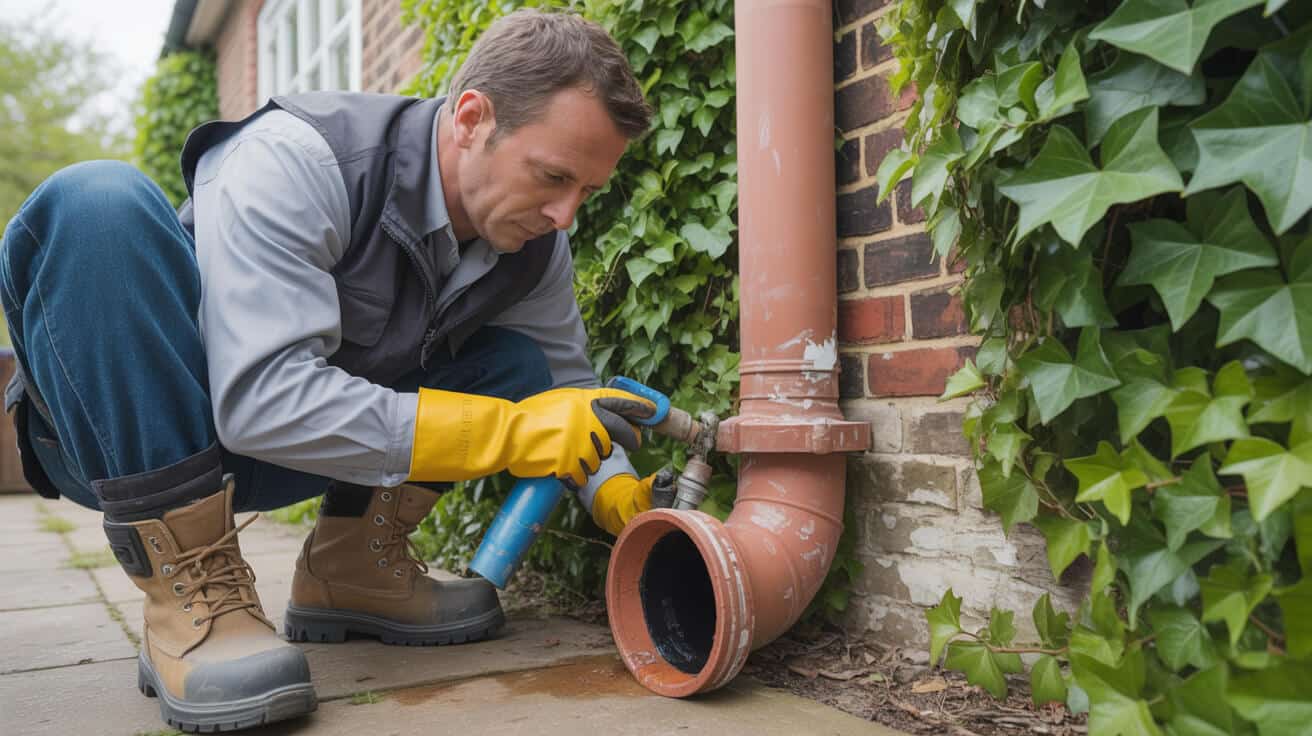
A period setting doesn’t buy legal leeway—the regulations apply with full force from first cut to final tile. Insurers, council, and buyers can all demand to see the paperwork.
UK Compliance at a Glance: WRAS, G3, and Building Regs
- WRAS Approval: Every component, visible or not, must meet WRAS standards for supply integrity and safe drinking water.
- G3 Certificate: Any work involving unvented hot water storage (megaflo, cylinders) must be completed and commissioned by a G3-certified engineer, with data-logged TPRV discharge pipe, expansion vessel checks, and proof pack in hand.
- Key Building Reg Parts:
- Part G: Mandates anti-scald protection (TMVs) and minimum water efficiency.
- Part H: Demands correct drain layouts, venting, and fall compliance.
- Part L: Sets the standard for insulation and efficient fittings.
- Part P: Controls any electrical work—stat cabling, towel rails, even just a new pull-cord.
Why Documentation Is Everything
- Proof or It Didn’t Happen: Every intervention needs a traceable paper trail—survey photos, installation certs, material receipts, and digital logs. Without them, buyers or compliance officers can challenge legality—even if the works are immaculate.
- Listed & Conservation Properties: Upgrades must be reversible. Failing to document choices for council planning risks later enforcement, removal orders, or expensive re-dos.
Insurance, Saleability, and Accountability
- Insurers and Mortgage Lenders: Increasingly call for evidence not just of work done, but materials specified and standards met years in the past.
- Occupational Safety: Non-compliant plumbing can void cover, delay sales, or invite fines—especially if shortcuts are uncovered during a claim or post-letting complaint.
If your plumber can’t hand you proof, the new suite could cost you twice—once for fit, again at resale.
Where Do Most Victorian Bathroom Renovations Fail—And How Can You Sidestep These Traps?
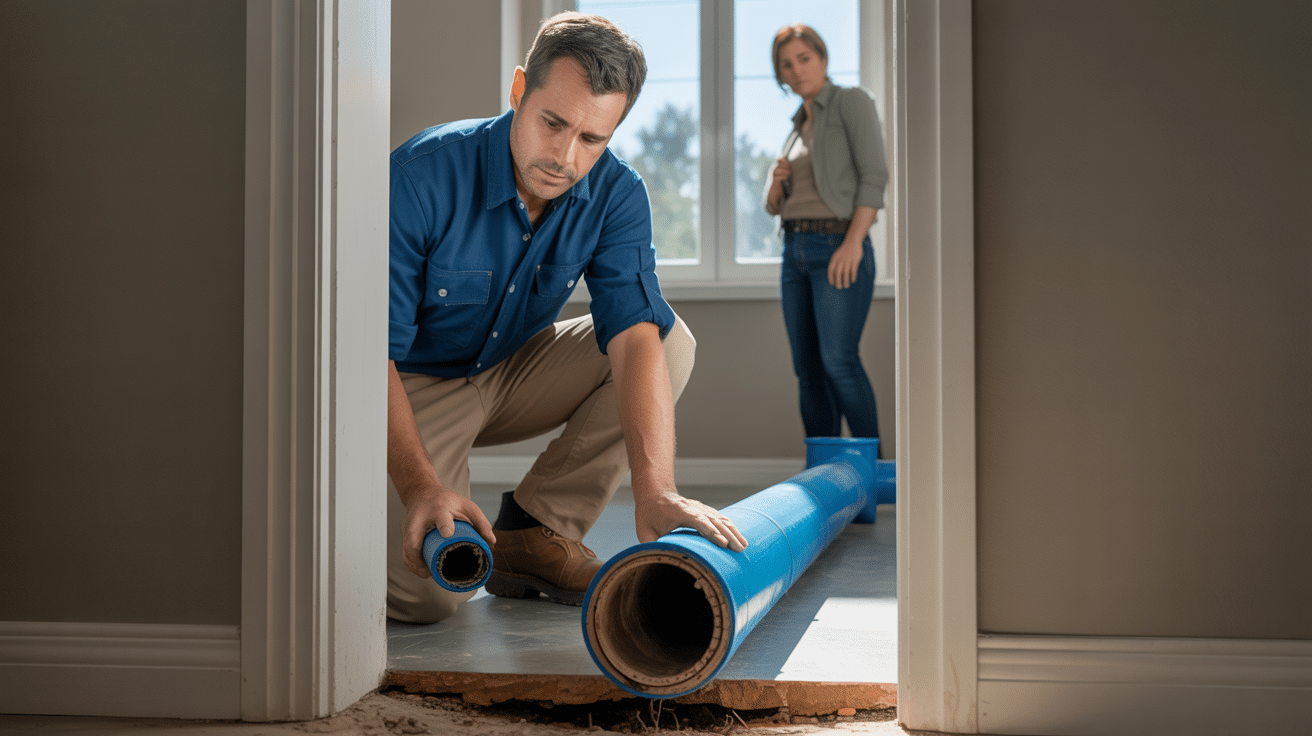
Almost every failed or costly renovation can be traced to predictable missteps—often encouraged by shortcuts, low-bid contractors, or a lack of legal awareness. Spotting these before you build is your best safeguard.
1. Patchwork Pipework—Never Fully Swapped
Partial replacements still leave pockets of lead or steel. This undermines all subsequent upgrades, opens up insurance gaps, and kills the chance of a stress-free sale or valuation.
2. Ignoring Subsurface Drainage
A floor laid atop unmapped or compromised clay drains is always a risk—roots, breaks, and sags spell disaster for your investment and occupant peace. Survey, don’t guess.
3. Water Efficiency Mistakes
“Heritage look” does not excuse missed WRAS or water-saving standards. Multi-dwellings, HMOs, and let properties especially cannot skip certified, efficiency-rated fittings—they’re a requirement for grants, MEES compliance, and council sign-offs.
4. Poor Paperwork
Without a full audit trail—photos, certs, serial logs—even the world’s neatest job can be disallowed or challenged later. This is now the norm for insurance and compliance.
The work that can’t be seen, and isn’t documented, doesn’t exist when it matters most.
Solid solutions always trump superficial ones: demand total clearance and full evidence, not just a shiny finish.
What’s the Stepwise Route to a Complaint-Free, Resale-Ready Victorian Bathroom Fit-Out?
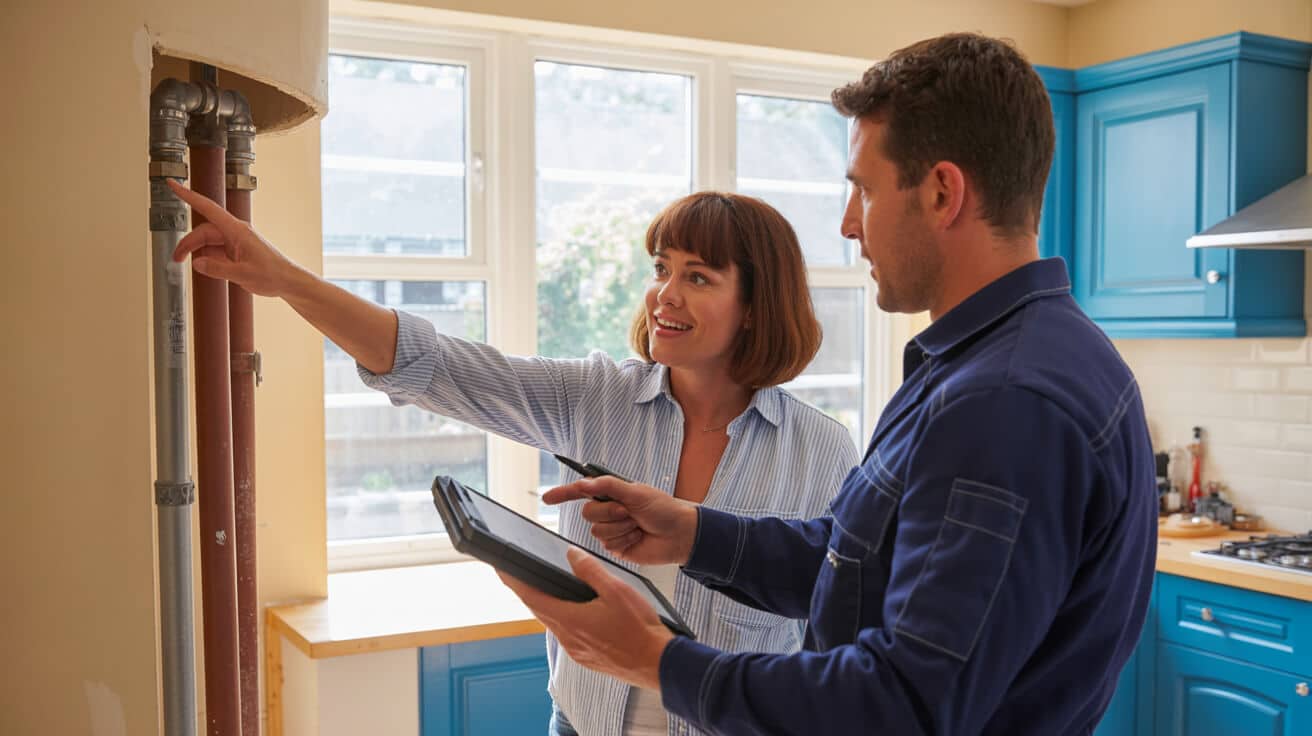
“Bodge and hope” is not a strategy. The only reliable value comes from a transparent, best-practice process—one that Plumbers 4U executes on every period job.
1. Open Up and Survey
- Remove boxing, lift boards, and access every void to check pipe condition, material types, connections, and signs of legacy repair.
- Document every finding with timestamped photos and a mapped risk log.
2. Specify Upgrades That Respect Both Heritage and Code
- Run new copper or PEX piping along traditional routes but with full isolation, bracketed supports, and WRAS-certified fittings.
- Match all fixtures—taps, WC, cisterns—for style and compliance, not merely one or the other.
3. Drain and Waste Pipeline Audit
- Commission a drain camera survey *prior* to laying floors or attaching new heavy units.
- Resolve every blockage, root ingress, or vent error before proceeding—future-proofing tiles and finishes.
4. On-the-Record Compliance
- Log all G3, WRAS, and Building Reg interventions.
- Prepare a digital and hard-copy documentation pack—ready for council, agent, mortgage needs, or insurance evidence.
5. Professional Handover
- Leave each owner/agent with a full logbook, photo set, water efficiency and compliance certs, and maintenance guide. Agents and landlords in particular benefit: you’re audit-ready if challenged, with no last-minute panic.
Every documented upgrade today is one less emergency call, council snag, or lost sale tomorrow.
Which Fast, High-Impact Upgrades Offer the Best Return—with the Least Hassle—for Period Property Owners and Agents?
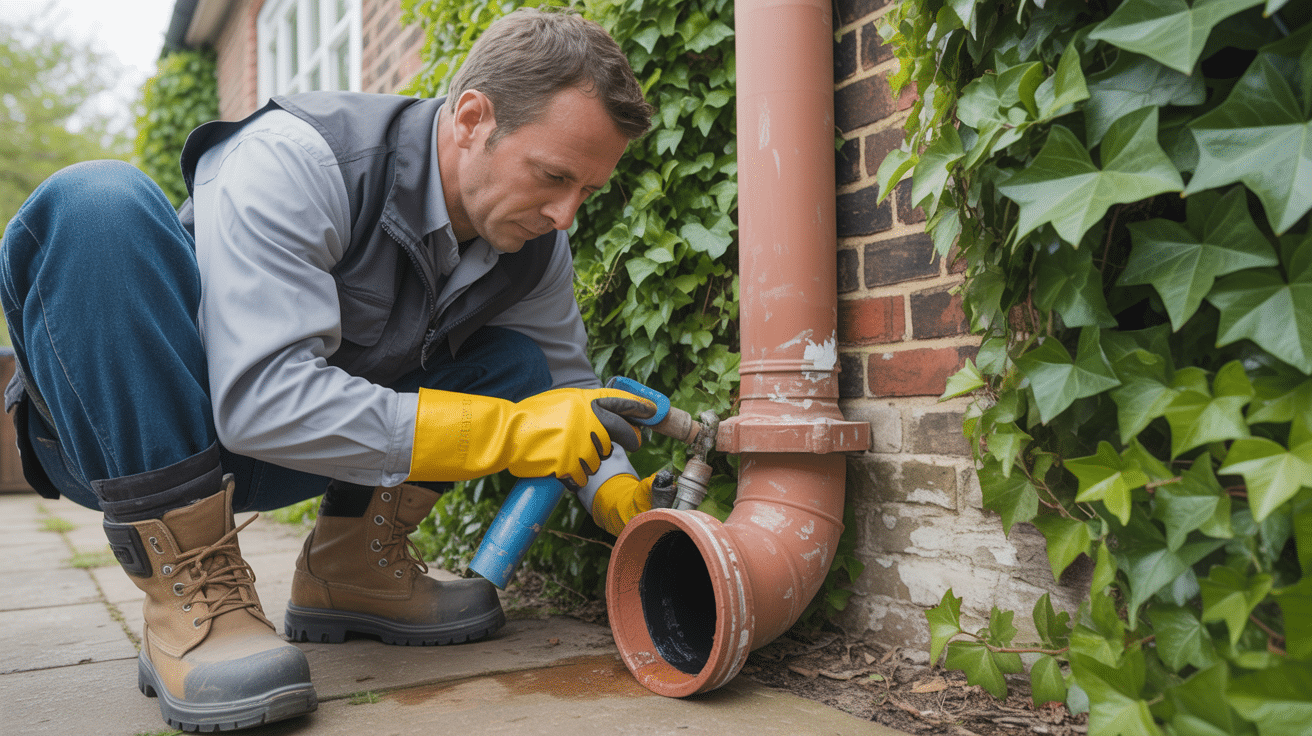
It’s not always all-or-nothing: strategic, staged improvements can secure many key benefits before (or between) larger overhauls.
1. Complete Lead/Steel Removal or Certified Philtre Contingency
- Full pipe swap is first preference—if it’s not physically possible in one go (e.g. flats with shared risers), fit WRAS-approved lead-philtre units at the stopcock, and record the location and future upgrade plan in the property dossier.
2. WRAS- and WaterLabel-Efficient Heritage Taps and Dual Flush Units
- Elegant, period-true taps and dual-flush mechanisms now exist that are fully certified—these satisfy inspectors and grant conditions without sacrificing traditional style.
3. New Isolation Valves at Every Fixture
- Makes future repairs possible by isolating just the affected area, not the entire bathroom or property. This slashes disruption, especially useful in tenanted or multi-flat properties.
4. CCTV Drain Mapping Before Final Finishes
- Investing in a drain survey produces a permanent asset—images and a mapping report you can show stakeholders, agents, or insurers if problems arise.
A little spent now on evidence prevents expensive, disruptive redos down the line.
Staging these quick improvements protects occupants and raises asset value while letting budgets and plans breathe room for future upgrades.
How Does Plumbers 4U’s Professional Method Put You in the Best Position—Now and at Resale?
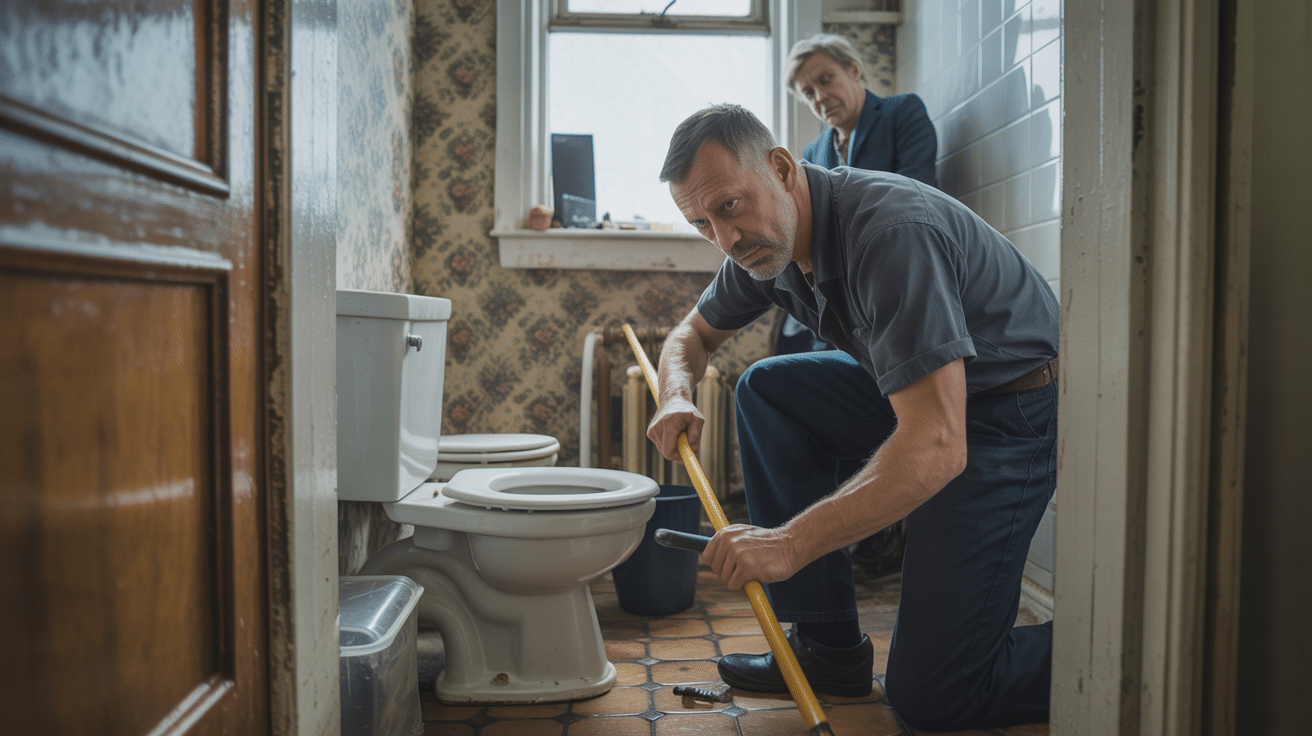
With Plumbers 4U, you’re getting more than tick-the-box instals. The entire process revolves around transparency, protection, and making your historic upgrade an asset, not a liability.
1. Transparent, No-Assumption Surveying
- Each job starts by physically opening and logging *everything*—no quotes “subject to survey.”
- Photo walkthroughs, pipe material logs, and risk maps are all supplied to owner, manager, or landlord.
2. Consultative Explanations at Every Step
- You stay in control—risks, options, and upgrades are explained, not hidden, so you always sign off understanding the rationale, not just the result.
3. Proof-Driven Execution
- From every removed section of legacy pipe to each compression fitting, the team logs part numbers, before/after shots, and certs—creating an audit trail insurance, council, and future buyers will value.
4. Council-Ready Compliance Handover
- G3 and WRAS compliance packs prepared for every job; Historic England, listed building, and planning documentation proactively handled by engineers—never left for you to piece together.
5. Ownership Beyond the Instal
- Aftercare, maintenance logs, and scheduled check-ins ensure your investment is fully supported—many issues can be prevented just by having reliable reminders and ongoing documentation.
A renovation that looks good on the day should still protect you years down the line—the only shortcut is proper evidence.
Why Choose Plumbers 4U for Your Victorian Bathroom Renovation in Brighton, Hove, and the South East?
Every project with Plumbers 4U means risk reduction, documented compliance, and value that’s recognised by surveyors, insurers, and councils—not just period style. Here’s what our approach offers owners, letting agents, and property managers:
- Survey and Quote, Never Assumption: You get transparent, room-by-room findings and costed options—so you always compare like-for-like, not an optimistic guess.
- Digital and Physical Evidence Trail: Every move from shut-off to final fitting is logged, photo-documented, and packaged for your records—the ultimate support in lender queries, legal claims, or council checks.
- Heritage Expertise: Our engineers understand, respect, and manage council and planning demands, so no job risks erasure or rework due to missed permits or approvals.
- Emergency Cover and Routine Care: We’re available for urgent call-outs, legacy system troubleshooting, and ongoing servicing—so no problem, big or small, ever spirals.
- No Sell, Just Support: Our priority is your long-term safety and value. Explanations are always in clear language, with zero pressure; you’re never upsold.
Every fully certified upgrade is one less risk for every future owner—period.
With Plumbers 4U, every Victorian bathroom project is a chance to document proof, earn peace of mind, and raise your asset’s long-run value—backed by engineers who think like owners, not just fitters.
Ready to Protect Your Investment? Book a System Survey or Sample “Victorian Bathroom Health Check” Today
A period bathroom is more than a statement—it’s a legacy item that gains value only when safety, compliance, and documentation are built in from day one. Don’t wait for hidden issues, insurance blackholes, or council headaches to emerge months down the line.
Plumbers 4U brings certified engineers to every home and commercial job across Brighton, Hove, Worthing, and the South East. We marry heritage expertise with up-to-date codes—delivering you not just an upgrade, but an asset.
It’s what you log, not just what you fit, that sets the standard for true period renovation.
Take control: Book your detailed system survey or download a free “Victorian Bathroom Health Check” sample today. Secure peace of mind and showcase compliant beauty for years to come.
Frequently Asked Questions
What plumbing issues typically remain unseen until Victorian bathroom renovations begin?
Most plumbing faults in Victorian bathrooms aren’t apparent until you start opening floors, boxing, or old walls—where a century of patchwork solutions often lurk. Underneath the surface, you might find lead or galvanised steel supply pipes, corroded copper, cracked clay drains, and a tangle of unlabelled DIY fittings that can undermine both water safety and insurance.
The usual suspects include pipes that have survived decades—sometimes centuries—without major intervention. When you boost water pressure for a new shower or tap, those hidden joints and gauge changes are often the weakest link. Even a partial legacy—such as a remnant stretch of lead in the supply—breaks WRAS and Building Regs, with visible consequences if detected in a future survey or claim. Meanwhile, original drains can be silted, damaged, or root-invaded, leading to blockages months after you finish the job.
When it comes to old plumbing, what you can’t see is nearly always what bites you.
Commonly Uncovered Hazards in Victorian Bathrooms
- Lead, galvanised steel, or a mix of supply materials (insurance and health risk)
- Obsolete traps, air-admittance issues, or rotted vent pipes leading to slow drains and odours
- Old DIY repairs behind boxing or under baths, sometimes incompatible with modern appliances
- Inaccessible, jammed, or missing shut-off valves complicating emergency repairs
- Cracked, root-invaded, or misaligned clay or cast iron drainage
Prevention Is Cheaper Than Rescue
A pre-renovation audit, including a CCTV drain inspection and lead test, is essential—not just to sidestep future disasters, but to plan upgrades that truly last. Plumbers 4U provides step-by-step evidence, so you see exactly where old problems might sabotage a new finish. This upfront approach often uncovers cost-saving alternatives, minimises downtime, and eliminates compliance headaches down the line.
How do you balance preserving Victorian features with modern plumbing upgrades?
Plumbing a Victorian bathroom isn’t just about installing pipework, it’s about treating every period detail—tiles, trims, mouldings—as irreplaceable. You want upgrades that respect both heritage and modern needs, making it crucial to plan your approach before lifting a single board.
Smart preservation begins with thorough documentation: catalogue floors, joinery, and ornamental fittings so nothing original is lost or wrongly replaced. When possible, pipe runs are routed through existing voids or behind new boxing, never by hacking into antique masonry. Tradespeople should lay cushioned, non-slip protection on every access route and use reversible fixings—so even hidden pipes remain serviceable, but historic surfaces untouched.
Communicate with your local conservation officer, especially for listed or character properties. Getting method approval in writing, and logging every step and salvage, will save headaches with insurance and sale later.
True respect for heritage is visible in the details you leave untouched.
Practical Steps to Safeguard Victorian Features
- Photograph all visible features and fixtures before works start
- Instal fire-retardant covers on baths, floors, and skirtings
- Adopt reversible, concealed routing for all new pipework
- Log and label every removed or altered feature for refitting
- Secure written, step-by-step approval for any permanent alterations
Why This Pays Future Dividends
A careful, minimally invasive approach not only preserves your property’s identity, it helps maintain or even increase market value. With Plumbers 4U, you get a fully traceable record that becomes a major selling point for buyers—and a guarantee against future disputes with insurers or heritage bodies.
Are Victorian bathrooms legally required to meet today’s plumbing and water standards?
The short answer: every Victorian bathroom, no matter how historic, must meet the same UK plumbing and water regulations as a new build. There’s no “grandfather clause” for original pipework—anything affecting safety, water quality, or drainage must comply with current WRAS, Building Regs, and, where relevant, G3 and Part P provisions.
For example, WRAS approval is mandatory for pipes, tanks, valves, and even minor fixings. All supply and waste upgrades require compliant materials, and non-approved originals (like lead or early plastics) are to be replaced. If your renovation includes an unvented hot water cylinder, G3 certification—and completed paperwork by a qualified installer—is essential, otherwise you risk invalidated insurance and sale complications.
Documentation is everything: local councils, insurers, and new buyers routinely request photos, survey evidence, and product certifications for all work, especially in heritage homes.
You can’t sell—or even let—a fairy tale: the storey is in the paperwork.
Spotlight on Core Compliance Requirements
| Compliance Area | Key Coverage | Implications |
|---|---|---|
| WRAS | Pipes, tanks, valves, tapware | Applies pre- & post-renovation |
| Part G | Temperature, safety, legionella | All bathroom upgrades |
| Part H | Drainage, waste, air admittance | Any renovation work |
| Part L | Heating, insulation, controls | Underfloor, pipe upgrades |
| G3 | unvented hot water cylinders | Only G3-certified sign-off |
Penalties for Non-Compliance
Skip these standards and you risk rejected insurance, enforcement notices, and failed property sales or lettings. Plumbers 4U guides every phase with contemporaneous logging and formal sign-off, eliminating the risk of a nasty compliance surprise in years to come.
What’s the optimal method to safely upgrade pipes and fixtures in a Victorian bathroom?
Upgrading Victorian bathroom plumbing is a checklist-driven process that prioritises full-system safety and future-proof compliance. The aim: spot every vulnerable link, isolate risks, and deliver visible improvements that are also “invisible” in day-to-day function.
Begin with a full, phase-by-phase audit—open boxing, trace every run, photograph all materials, and tag shut-offs. Any signs of lead or steel? Test, then replace in full from stopcock to final tap—no spliced legacy allowed. Where asbestos is present, use a licenced contractor. All new supply runs should use WRAS-approved copper or PEX, routed with precision behind panels or in service voids to avoid harming period finishes.
Isolation valves are added at every fixture and supply route. Before closing up, run pressure and flow tests, CCTV drains, and photograph each stage. Only sign off when results are documentation-grade. Protecting and labelling every intervention, right down to the last tap washer, means easier service, show-ready compliance, and less risk for future owners.
The upgrades nobody sees are the ones that earn you the easiest insurance and highest resale.
Stepwise Guide to Proven Upgrades
- Audit and photograph all plumbing—including inaccessible and concealed runs
- Identify and remove any hazardous or non-compliant material (lead, steel, lagging)
- Route pipes for minimal heritage disruption and clear future service access
- Label and document every isolation valve for fast emergency response
- Use only WRAS/G3-certified parts and competent installers
- Pressure-test and log all new works, then submit certification into property records
For heritage or insurance-sensitive homes, Plumbers 4U provides a maintenance log and asset file for every phase—your invisible safety net years after the dust settles.
Are modern upgrades—like showers and underfloor heating—possible in a Victorian bathroom?
Modern features such as power showers or underfloor heating can be integrated into Victorian bathrooms, provided you approach the project strategically and compliance-first. The secret is to prepare the infrastructure—rewiring supply lines, verifying water quality, and ensuring every fixture passes both heritage and safety checks.
A power shower, for instance, requires properly sized, pressure-tested copper or PEX pipes—lead or galvanised lines simply can’t cope safely. Unvented cylinders need all-new feeds and commission by a G3 installer, while underfloor heating systems (hydronic or electric) demand accurate subfloor evaluation and sign-off for electrical safety (Part P) or water-proofing where tiled finishes are retained.
Choose period-authentic, WRAS-approved fixtures to preserve visual harmony and guarantee insurance acceptance. For all major upgrades, every last part—valve, pipe, or control—should be documented, labelled, and logged.
Comfort is never at odds with character—if you upgrade with both regulation and restoration in mind.
Choosing Features and Protecting Value
- Route supply pipes for both modern pressure and legacy layout; never re-use banned materials
- Coordinate with heritage officers before major intrusive works
- Opt for WRAS/G3-certified, period-style hardware for full compliance
- Document all upgrades for insurance, council, and eventual buyers
| Modern Feature | Suitable Scenario | Regulatory Proof Point |
|---|---|---|
| Power shower | Pressurised system, modern supply | WRAS, pressure test, CCTV |
| Unvented cylinder | All-new feeds via copper/PEX | G3 sign-off, asset log |
| Underfloor heating | Stable subfloor, compliant tiling | Part P or water test, photos |
| Dual-flush WCs | Character hardware available | WRAS approval, receipts |
Plumbers 4U personally guides the process so each new comfort is matched to compliance and property value.
How much should you budget for plumbing remediation in a Victorian bathroom remodel?
Plumbing costs for Victorian bathroom renovations range from £2,000 to over £10,000, depending on hidden discoveries and restoration scope. Accessible fixture swaps sit at the entry point; the highest spend occurs when legacy supply, drainage, or safety-compliance issues are found beneath flooring or inside walls.
The crucial factor is what’s beneath the surface—lead or steel piping, broken clay drains, or missing shut-offs all add hours and parts to the job. Heritage properties add another layer: extra site protection, specialist conservation coordination, and detailed photo logging. Missed legacy issues also trigger repeat visits or emergency callouts, multiplying costs.
A pound spent on surveying often saves ten pounds fixing what others miss.
Victorian Bathroom Remediation Cost Guide (South East UK, 2024)
| Scope Level | Guide Price | Notable Detail |
|---|---|---|
| Visible fixture/pipe swaps | £2,000–£3,500 | No legacy pipe/drain replacement |
| Full repipe/drain overhaul | £4,500–£9,000 | Includes audits, documentation |
| Compliance survey | £850+ | Needed for insurance/listed status |
| Emergency callout/remedial | £900–£2,500+ | Leak control, urgent certification |
Where the Money Goes
- Full removal of non-compliant or hazardous pipe and drain runs
- Preservation and protection for period surfaces during access
- Fees for CCTV, full documentation, and certifying bodies
- WRAS and G3-certified materials, labour, and reporting
- Careful scheduling to meet heritage office or buyer deadlines
Plumbers 4U ensures every quote is fully transparent, and every costing includes peace of mind—protecting both property and wallet for years after renovation.
Secure your Victorian home’s legacy, comfort, and future market value with a Plumbers 4U system survey and compliant installation. Every upgrade is evidence-logged, heritage-appropriate, and built for tomorrow’s insurance, letting, or resale standards—without sacrificing a single original detail.

